Quicklinks
Quicklinks

Drones are considered "game changers." These are inventions that can radically change or create a new market. HHLA Sky has recognized this and wants to create a standard for drone logistics with its multi-award-winning control center and extremely safe industrial drones.
But how does a company do that? Develop a market that doesn't actually exist yet? How do you put together innovative teams and give them a free space? And what is the best way to overcome hurdles, for example the restrictions and regulations in aviation? Matthias Gronstedt, Managing Director of HHLA Sky, knows how to manage innovation. And he reveals a lot about it in HHLA Talk.
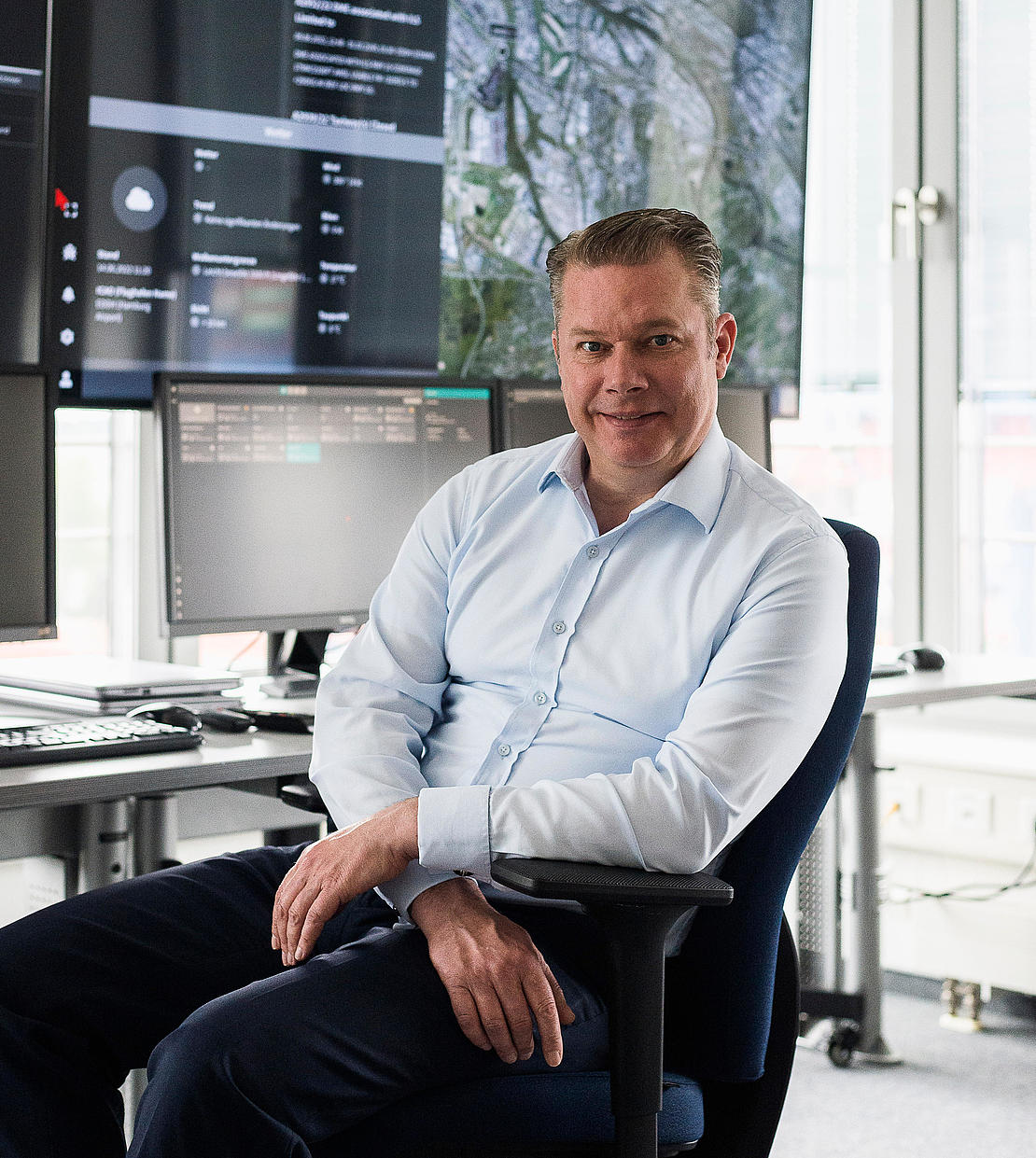
Hello and welcome to HHLA Talk, which today will focus on innovations. Or, to be more specific: how do you generate ideas, and how do you make them usable? Can you organise innovations? If so, what is the ideal environment for this? We have invited someone to join us who is sure to have all the answers. After all, his company, our corporate start-up HHLA Sky, has won a whole host of awards: the 2021 Deutscher Innovationspreis and, this year, the German Innovation Award as well as the distinction of being named a Top 100 innovator. Welcome, Matthias Gronstedt
Hello Christian, thanks very much for inviting me. It’s great to be here and to have the opportunity to discuss the important topic of innovation with you.
It certainly is important, and you’re a member of HHLA Sky’s management, as I’ve already mentioned. First things first, of course. Congratulations. Did I forget any awards?
No, thank you so much for the congratulations and thank you, of course, to our teams who put so much work into it all. And, of course, many thanks to our supporters at HHLA as well, who have made it possible for us to work in the way that we do.
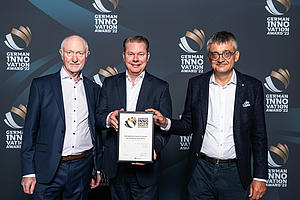
We'll get to why you were given these important awards shortly. Can you tell us a little bit about the kind of product it is?
Of course. Essentially we’ve built a control centre like the ones the police or NASA use. More than 100 drones or mobile robots are managed and controlled from a PC in this control centre. That is what’s innovative about it. It’s not just the control and monitoring of what’s happening in the air that’s innovative, but the entire process management behind it.
100 drones doesn’t mean that there are 100 pilots sitting there. A small company will probably just have one or two pilots and several drones.
Exactly. That was the idea. Up to now, drones were flown by remote control. That’s a one-to-one relationship. For an industrial company or a company like us, that is simply not economical. So the idea was: How do I make it so a pilot can control multiple drones at the same time?
Yes, and presumably these drones also have to meet special requirements for the industrial sector. I'm thinking about security or when a number of drones are flying autonomously, for instance. That was yet another challenge.
Absolutely. The award wasn’t won for the control centre alone, but also for the drones that we’ve developed. We’ve developed industrial drones, or to be more specific, we’ve developed the electronics used in the drones. What has to go in there to make the device suitable for industrial use? We developed all the software that runs on the drone and put it on the chip, making the whole situation manageable and really safe and cyber-secure. This really is crucial.
Indeed. It sounds like a really complex product! Was there a basic concept for it at the very beginning?
To begin with, the basic idea was: there are drones used as toys. The question was how to make drones suitable for use in an industrial setting. It seems obvious: I can now use the third dimension for my business processes – and possibly for business processes that I’m not even aware of yet.
You mean the air.
That’s right, the air. Exactly. This means I'm replacing helicopters, I'm replacing lifting platforms, I'm replacing scaffolding, I'm replacing ladders and masts and, of course, I'm doing it in a very flexible and much more cost-effective way. That was the fundamental idea. Then we said, okay, how do we actually go about doing it?
You just touched on it: when you came up with the idea of using them, people associated drones with toys that you fly around the garden. This means this market for industrial applications didn’t actually exist yet.
The market doesn’t exist yet but is just beginning to emerge. It was actually pretty clear that, if done right and made available to the industrial sector, these drones have enormous potential. There is a definite huge future market with incredible potential in this emerging market. But as always when a market is emerging, there are naturally many, many, many people who want a piece of that big pie, and we’re no different. That's why we’re happy to have won these innovation awards. When we’re trying to attract customers, it makes it easier to explain that this thing we’ve built is really something special.
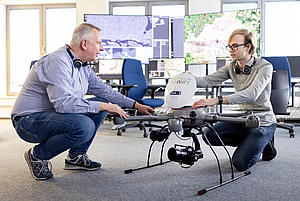
Yes, I can imagine that sales play an important role. The customers don’t even know how great your control centre is yet. Sometimes they still don’t know about all the things you can use drones for. I assume sales are particularly important to you?
Yes, absolutely. This is a huge topic. Naturally it requires experienced people who are also really knowledgeable about and have mastered the solutions business and systems business. This question inevitably arises when you’re approaching a market like this that doesn't really exist yet, since you can't carry out a market analysis. That’s simply a fact. This means I need to carry out a potential analysis beforehand. And during this potential analysis, which we have of course carried out consistently, it becomes relatively clear who might, and who will, be interested in and have a need for these solutions. And then you carry out profiling and try to find out who you should call first to ensure the fastest possible success. If you do it the right way and have the necessary expertise, you call them up and ask for appointments to introduce yourself and the product.
I imagine that this potential analysis you mentioned is really a creative process in itself. After all, you can't run a data analysis because you don't have any data yet; you have to learn to use your imagination. This takes us right back the beginning, to innovation, doesn't it?
Innovation is ultimately something new that provides a direct benefit, not to be confused with an invention.
Investment in research is investment in knowledge. And investment in innovations is investment in benefits.
You have to clearly distinguish between these two things. This means taking the latest research results and starting to use them to create an innovation that provides customers with a direct benefit. You really need to focus on the question: What benefit does it provide? Based on this benefit analysis, you can then of course identify the customers for whom it would actually be relevant.
It sounds to me as though you need a great deal of freedom even during the development phase. And you launched a corporate start-up within HHLA. You were there right from the start. Were you able to find the freedom you needed within the corporate structure?
Yes, absolutely. I must stress that this was definitely the case. We have the full support of our Executive Board and our Chairwoman, and this was of course the prerequisite. There are actually four categories that you have to look at in order for innovation to ultimately be successful. These are a management that transforms innovation, a climate of innovation, the innovative processes and organisations that have to be mapped. Lastly, there’s the nature of the “open innovation”, meaning: How collaborative can I really be when I’m developing my products and ideas? In other words, how can I interact with external parties? This is another very crucial matter. You really do need to give these four categories due consideration. If you have clear ideas, this can happen, and you’ll also be in a position to control it. Once you have carefully thought it through and spelled it all out, I always say.
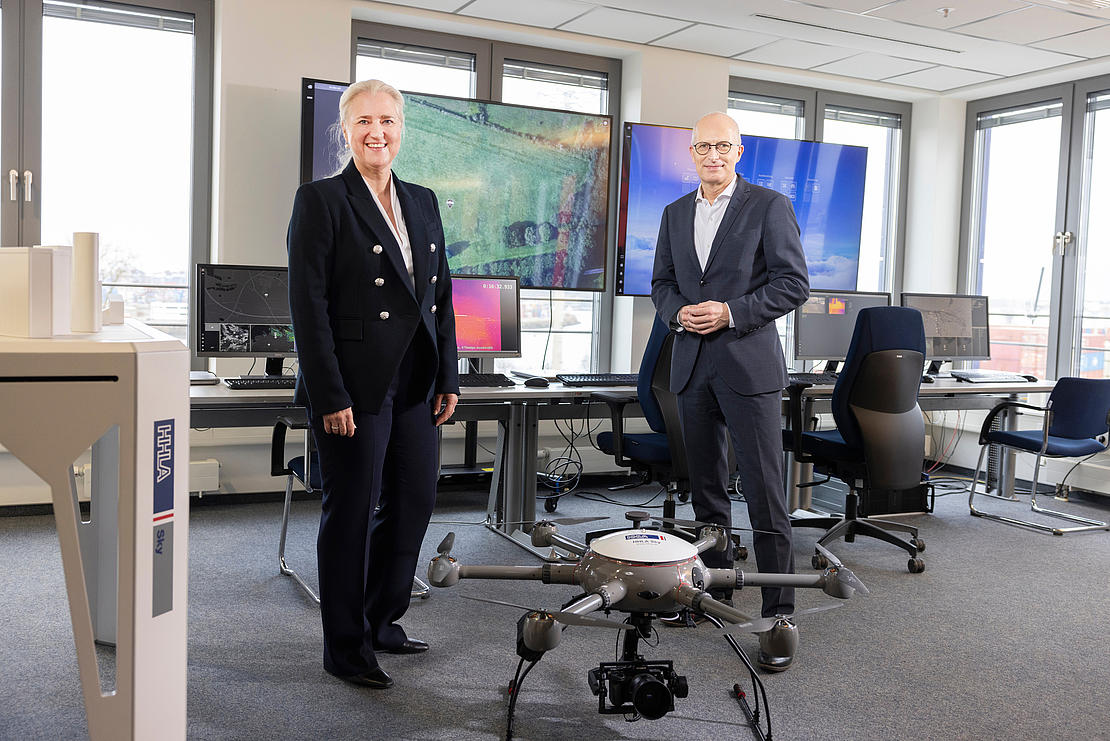
This freedom needs to exist not just within the group, but also within your own organisation. How do you create freedom across departments, to ensure that you can continue being creative?
This touches on a very important issue, which of course all has to do with high-level intellectual work – with creativity, with passion, with determination. Quite simply, you need freedom, intellectual freedom. This is crucial, actually. And of course some peace and quiet too, and not constant pressure from outside, because otherwise you just get out of that certain flow that everyone knows about. Of course, this kind of freedom also means that we no longer have any departments. Because for me, the word “department” comes from this idea of compartmentalising. Of course, that doesn’t promote cooperation because everyone has their own thing to do, and that's that. That doesn't work in a small company. It also doesn't support the required interaction and the sources of inspiration you really do need to ultimately promote innovation and creativity.
This kind of freedom also means that we no longer have any departments. Because for me, the word “department” comes from this idea of compartmentalising and that doesn’t promote cooperation
Collaboration instead of compartmentalisation?
Exactly. As I say, we no longer have departments in our company. We do have focus areas, focus fields in which everyone has respective qualifications – for example, in research, development, programming, flying drones and all these kinds of things. Though we are organised into projects within the company, because at the end of the day, every task has to be completed somehow and every task is a project. With us, you can come forward and say: Hey, I’d like to do this, or I’ll do that, I’ll follow through with it. The person who has taken on responsibility for the project looks for the other members of the team who are best positioned to support them. This is how we form connections within the team and how we continuously improve and have an ongoing exchange of experiences. This is actually important.
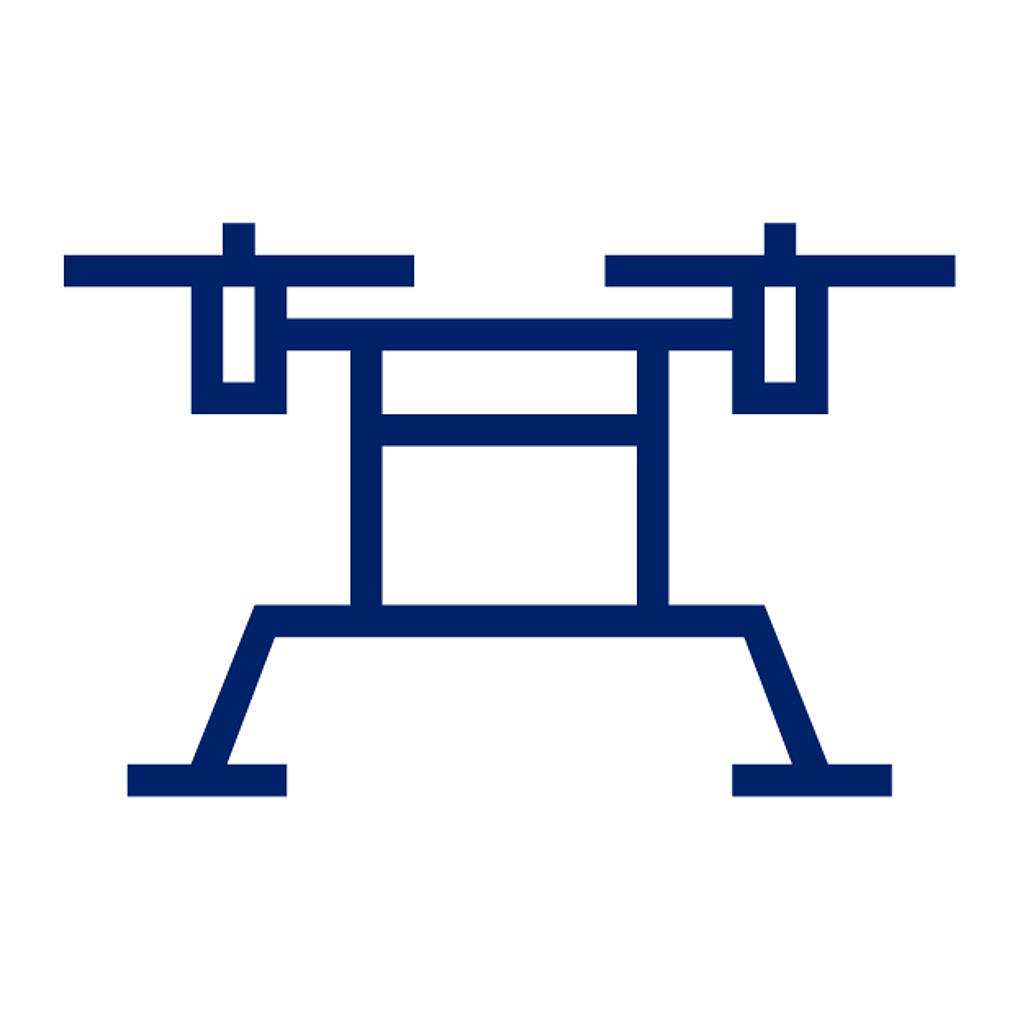
The development of the first globally scalable end-to-end drone system enables drones to be operated safely beyond the visual line of sight (BVLOS). Customers can integrate the system into their own business processes independently, or use it as a service operated by HHLA Sky. In these cases, the HHLA subsidiary will analyse their requirements, work with them to find a custom, often highly specialised solution, and implement it for them.
Yes, it sounds like you also need the right kind of spirit to work this way. If you say, okay, I'm going to do a project, who wants to help? and everyone ducks out of it, things don’t look good. One might say that for you, it's not a question of organisation so much as a question of what matters to you.
Yes, I think it's all a question of determination and passion. Ultimately, you have to have this determination to do the things we did yesterday better today, while looking to the future. That’s what really sets our team apart. You can imagine the kind of people who apply to become drone pilots, service technicians, system engineers. They are all people who believe that drones have a great future ahead of them. They bring their passion, their enthusiasm and the desire to create positive change. That’s ultimately the intrinsic motivation. As a boss, I’ll say – if I may put it this way – that I can’t provide people with motivation. I’m not responsible for that. I can create the framework conditions within an environment that is my responsibility. Just like a football coach: They aren’t on the pitch. They can’t take a shot. But the coach makes sure that the team is empowered. And that's what I take care of, seeing to it that we have the right competencies and that the team is put together so that we can ultimately move in the right direction.
It sounds to me like you've also been quite lucky to find yourselves working in the right industry. In other words, an industry that’s in the process of reinventing itself, that didn't actually exist before. Do you think that the experiences you have here, with everyone being so passionate about what they do, that this could also be carried over to other industries? Can innovation be organised in this spirit?
I personally feel that it can be applied to absolutely anything. It’s certainly possible. But there are always regulatory limitations, such as legislation for accounting, etc., etc. It would certainly be relatively difficult, but other than that, I think you could apply it to any area if you wanted to. When you realise that things aren't so great the way they are, you have to rise to the challenge of trying to make a change. You also have to be aware that you’re going to fail sometimes! That’s a given. You just have to make sure you don't fail too often. That's the key thing here, because otherwise it costs a little more money, unfortunately. But that's all part of it. You have to try things out. You just need to do things, that’s what I say. Just do them, but in a focused way.
And you have to be aware: Yes, I also fail sometimes! That is quite clear.
You just have to make sure you don't fail too often. That's the key thing here, because otherwise it costs a little more money, unfortunately. But that's all part of it. You have to try things out. You just need to do things, that’s what I say. Just do them, but in a focused way.
Of course. You mentioned regulatory aspects just now. That must be somewhat frustrating at times when you work with drones. Do you also need to be able to tolerate a certain amount of frustration? Perhaps you have to manage your expectations, or something along those lines. Could you tell us a little about your plans to fly drones autonomously? I believe they are already entirely feasible from a technical standpoint, but things aren’t as clear with regard to regulations.
Yes, you’re absolutely right. What do people need to understand first of all? The key point is that when you move a drone through the air, you are operating in shared airspace and are therefore subject to the security conditions and safety measures that apply to the aviation industry. This in turn makes EASA the relevant authority, which dictates…
EASA is the European Union Aviation Safety Agency.
… how drones must be operated and constructed. Fortunately, we anticipated this relatively far in advance, so we are well on our way, technologically speaking. The EU Commission has issued drone regulations describing exactly how this can be done, and member states have to implement them. You are always operating in a space that is subject to these aviation regulations and this legislation. The good thing is that we have focused on industrial companies right from the outset. I fly our drones on my company premises, which means I have to contend with fewer airspace restrictions than if I were flying them in a public space. I am allowed to fly above my property. Any normal drone pilot is allowed to do this. It’s only when I move off my property that the regulations come into play. That's when I have to get permission from the aviation authority.
Right, so you’ve found a workaround of sorts, by saying, OK, you’re first going to focus your products on campus logistics, or intralogistics, and spaces where you’re able to fly. “U-spaces”, I believe they’re called. What are your thoughts on this? Will there be more of your drones flying over Hamburg's airspace in the years ahead? What do you think?
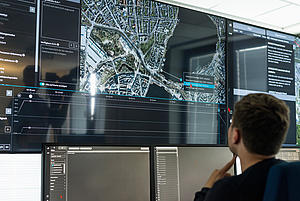
That would, of course, be absolutely wonderful. Though it’s not that simple, since Hamburg's airspace, the entire city, is in controlled airspace. Because our airport is located more or less in the city centre, it’s controlled airspace, which is subject to special conditions. But there is work being done, as you say, to set up a U-space. There will be several U-spaces, that’s to say, unified airspaces for manned and unmanned aviation, in Germany. In Lower Saxony, for example, where there’s no controlled airspace, there are areas where you can move around much more freely. We also have test sites there spanning several hectares, where we are able to try out our technology over long distances, at high speeds and in different weather conditions.
Could we perhaps take a moment to explain what a “U-space” is?
A U-space is essentially a reserved airspace above a particular area. Think of it like a shoebox.
Or like the port, parts of the port.
Or like the port, or like the entire City of Hamburg. It's an airspace with an upper boundary, in which drone traffic is coordinated. This makes sure drones don’t collide – or, if rescue helicopters fly through this airspace, which can happen, it lets everyone know about it. That's what a U-space is ultimately about, saying that there’s a defined airspace here. It could be created across all of Germany. It could be created above Hamburg. This airspace is defined in 4D, meaning in terms of both space and time. Within this space, who is allowed to launch their drone when, where, and under which conditions, is all coordinated. This ensures there are no accidents and no damage to the environment, people or equipment.
I think we digressed slightly just there. We actually wanted to briefly come back to the subject of innovation. I remember that in the beginning, there were just three or four of you.
Two, three, and eventually four of us after one year.
Exactly, it all happened relatively quickly. When you talk about innovation, you always hear people say that the team is key. How did you manage to expand your team while ensuring it remained innovative? Making sure that you also had people to take care of the administrative side of things, maybe people who are familiar with the law, seeing as we were just discussing regulation. How did you go about this?
It actually comes about when you really want to drive innovation. You need an environment where there is diversity. Diversity for us ultimately means diversity in professional backgrounds and experiences. This is crucial. As a result, we have A320 pilots, we have automation technicians, we have captains, we have navigation specialists, we have microelectronics engineers, we have physicists who work on AI with us. AI was originally invented by physicists, so it makes sense to also hire physicists. We have software engineers and software architects. At the end of the day, it's this diversity that generates the innovation we’re looking for. The people need to have a very high level of expertise in their fields.
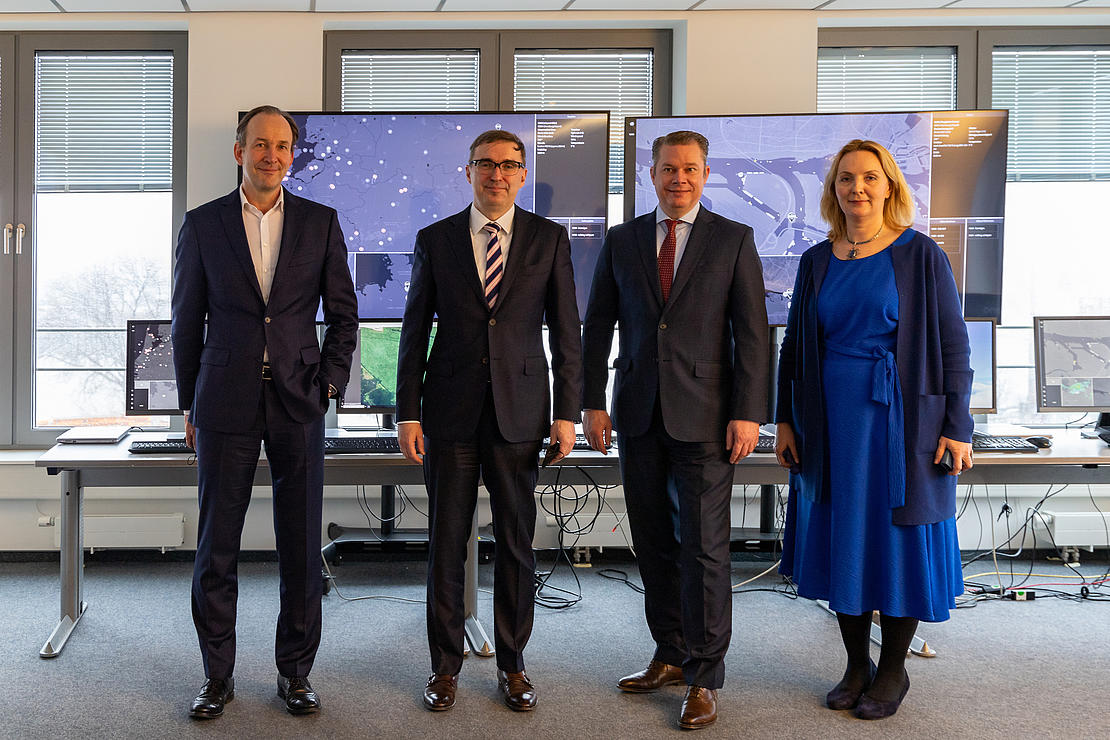
Yes, but presumably you had to bring a few newcomers on board as well. If you were looking someone for these cross-sectional tasks, I would be interested to know what question you would ask an applicant to find out if they are a good fit for your team.
Oh, you certainly can’t determine that with just one question. First of course, basic requirements have to be met, as demonstrated by the applicant's records, their certificates and CV. Then we conduct interviews. We hold two or three of them at this point, to find out: Do they have drive? Do they have a gleam in their eye? Is this someone who really wants something? That’s what we try to find out. Then they can start with us. At the end of the day, it is also possible, to some extent, for someone from any discipline to come work with us. If someone has the potential, then it's all about nurturing that potential and eventually helping the person to come out of their shell and do the things that they are capable of doing.
Yes, that was another way of describing what we referred to as “intrinsic” earlier on. You're trying to somehow find out if they’re more of an administrator or someone who wants to invent, create, innovate. I don't know, is there a verb for that? - I hope so.
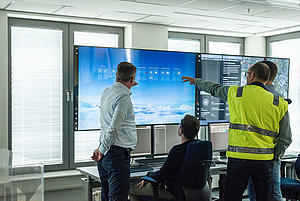
Who knows, but we know what we’re talking about anyway. However, in a small company it's not enough to have just one skill. In our case, because we are a small company, you have to be able to do more. That means having the right mix of all-rounders and experts, of highly experienced employees and very young employees. You have to pay attention to this. This is why we have employees who are anywhere from 23 to 70 years old. We want to make sure that the wealth of experience that the older ones such as myself have can be passed down to the younger ones, so that they can take over the company at some point.
You are no longer a newcomer to the business; other players and other products are already entering the market. How do you deal with this? Are you already having to look at whether you need to reinvent yourselves, whether you need to invent new products?
Yes, and that’s always going to be the case. It goes without saying that you always have to stay on top of developments. And so for us, it's not just about flying drones right now, about our control centre and making them available. It's actually about flying, driving and floating drones. We are going to look at everything that moves and manage it from our control centre. This means that we are talking about mobile robotic management – in other words, mobile robots that we will encounter in many areas of our lives in the future, and which will support us in our everyday lives.
To conclude, I’d like to ask a question that might sound a little harsh. Can unique products be planned at all or is there always an element of luck involved?
Well, there’s always an element of luck involved in life. But they can be planned to a certain extent in that growth fields are very granular these days, and recognising growth fields requires a high level of expertise. This means I have to be very, very good at what I do. I also have to be able to recognise the remaining blank spots, as I call them, in our subject areas and actually try to break into them. But of course there is also an element of luck, an element of inspiration, involved. When I go home in the evening after work, at some point I get an idea, write it down and enter it into our backlog the next morning. In fact, that’s what we do with all of them. Anyone who has an idea should note it down. It goes into our system, into the backlog. It is monitored on an ongoing basis, so that we can then say: now is the time, now we can do it, now we’ll look at your idea and now it’s going to be implemented.
Right, OK. It sounds like you still have a lot of ideas in your backlog. We can certainly expect more to come from you. Matthias, thank you so much for being here and giving us a little insight into the innovation business, so to speak.
Thank you so much. That was great fun, Christian. Thank you for having me.